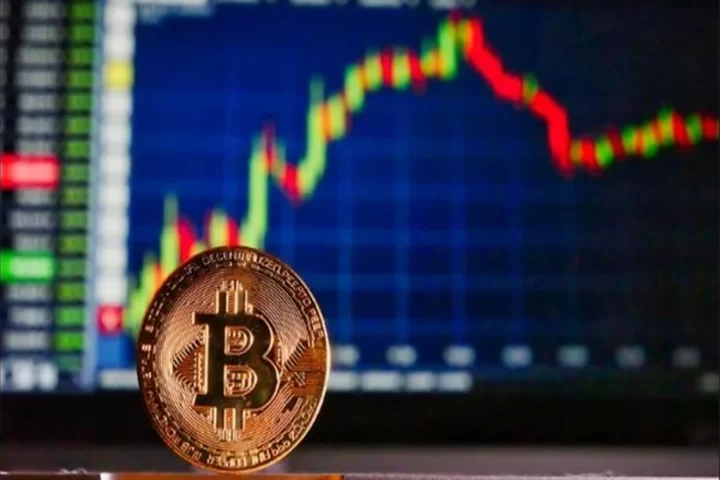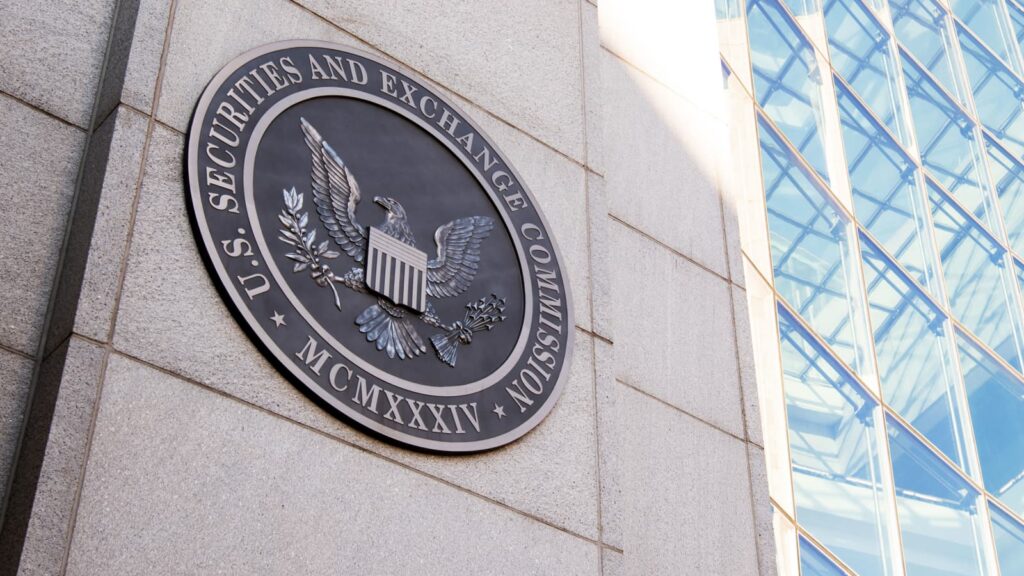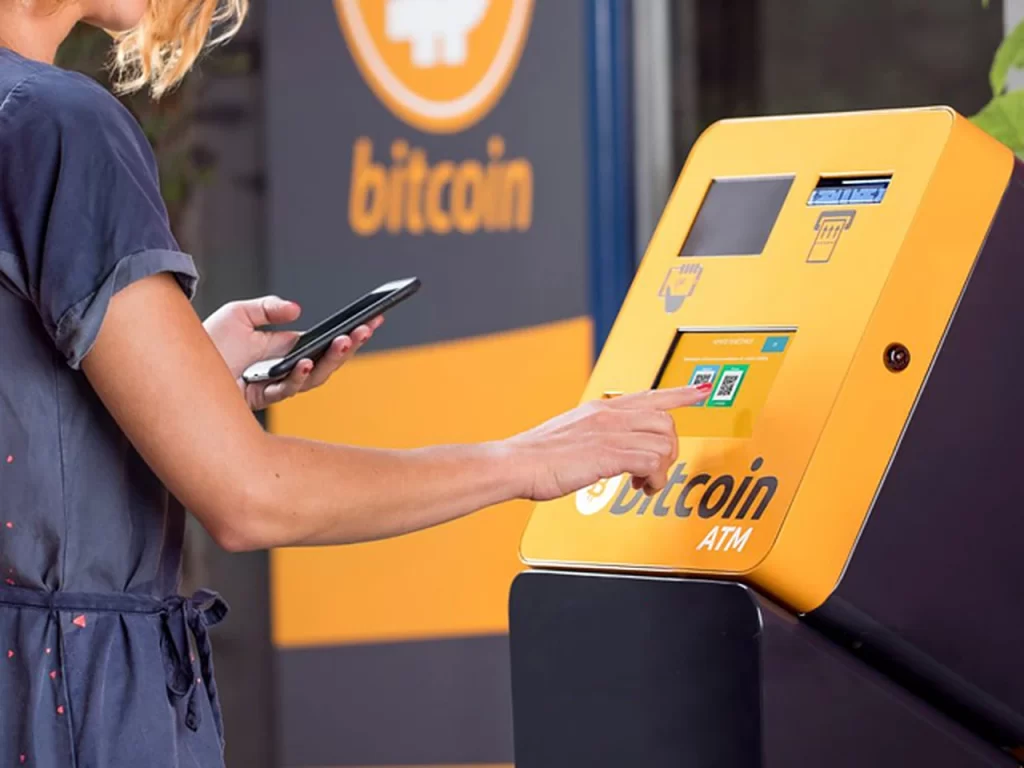Prominent lawyers and senators in the United States are urging Congress to launch an inquiry into the U.S. Securities and Exchange Commission (SEC) following a reported compromise of their Twitter account, previously known as X, which disseminated false news regarding the approval of spot Bitcoin exchange-traded funds (ETFs).
Senator Bill Hagerty expressed his dismay over the incident, drawing a parallel between the SEC’s accountability and that of public companies in case of a significant market-moving error.
Hagerty insisted that Congress should seek answers, deeming the situation unacceptable. Senator Cynthia Lummis also called for greater transparency from the SEC regarding the events leading to the erroneous post.
Charles Gasparino from Fox Business revealed that securities lawyers had informed him that the SEC would need to investigate itself for potential market manipulation. U.S. Representative Ann Wagner described the incident as “clear market manipulation” that adversely affected millions of investors, vowing to obtain more information from SEC Chair Gary Gensler.
Bloomberg ETF analyst James Seyffart speculated that Gensler would be displeased with the staff member responsible for the alleged security breach, foreseeing consequences for the individual involved.
Investment manager Timothy Peterson criticized the SEC, arguing that its security breach amounted to a potential market manipulation event, a violation of the commission’s core mission of safeguarding investors.
READ MORE: Mysterious Bitcoin Transaction: $64,000 Spent on Enigmatic 9MB Data Inscription
The incident in question, labeled as market manipulation, involved the SEC’s Twitter account, which falsely claimed the approval of spot Bitcoin ETFs.
X Safety, an account under the control of X, confirmed that the SEC’s account had been compromised due to an unidentified individual gaining control over a phone number linked to the SEC account through a third party.
Notably, the SEC’s X account lacked two-factor authentication at the time of the breach.
Layah Heilpern, a Bitcoin advocate, highlighted that the false post remained online for 20 minutes and garnered at least 4.4 million views during that period.
Heilpern asserted that this amounted to clear market manipulation.
The SEC has not provided detailed information on how their Twitter account was compromised but has denied the involvement of its staff in publishing the unauthorized tweet.
Despite the controversy, Bloomberg ETF analyst Eric Balchunas remains optimistic about the official approval of spot Bitcoin ETFs, expecting an announcement sometime between 4:00 pm to 5:00 pm Eastern Time on January 10.
Bitcoin is unlikely to experience an immediate bullish surge in response to the United States Securities and Exchange Commission’s (SEC) potential approval of a spot Bitcoin exchange-traded fund (ETF), according to an analysis by trading firm QCP Capital.
Despite recent developments, Bitcoin’s price has displayed limited upside volatility.
The recent turmoil in the Bitcoin market was triggered by a hacker who falsely claimed on the SEC’s X (formerly Twitter) account that the first U.S. spot Bitcoin ETF had received official approval.
This incident was later revealed to be the result of a SIM swap attack, facilitated by the lack of two-factor authentication on the compromised account.
During this period of confusion and the subsequent correction by the SEC, the price of Bitcoin briefly approached $48,000 but failed to surpass that level.
QCP Capital interprets these events as a warning sign that even if the SEC grants official approval, it may not ignite the substantial rally that Bitcoin enthusiasts are anticipating.
READ MORE: Nebraska Legislature Proposes Bill to Establish Crypto Standards
The trading firm stated that the initial response to the fake “approval” was subdued, with Bitcoin unable to break free from its resistance level.
There remains a glimmer of hope for investors, as the deadline for approving one ETF application, submitted by ARK Invest, falls on January 10th.
Historically, the SEC has approved all ETFs simultaneously, so an announcement may be imminent.
$48,000 has become a pivotal price level for Bitcoin traders, with many considering it to be a local peak.
The future direction of Bitcoin’s price remains a topic of debate, with some foreseeing continued sideways movement, while more pessimistic predictions anticipate a substantial correction to as low as $35,000 or even $12,000.
At the time of writing, BTC/USD was trading near $45,600 ahead of the Wall Street opening on January 10th.
As the crypto market eagerly awaits the SEC’s decision, the uncertainty surrounding Bitcoin’s immediate future prevails.
Two U.S. Senators, J.D. Vance and Thom Tillis, have urged the United States Securities and Exchange Commission (SEC) to provide a comprehensive report to Congress regarding the security breach that occurred on January 9 involving the SEC’s X Twitter account.
In a letter addressed to SEC Chair Gary Gensler on the same day as the incident, the senators expressed their grave concerns about the breach and its implications for the SEC’s internal cybersecurity protocols.
The senators emphasized that the breach was not only a matter of cybersecurity but also ran contrary to the SEC’s fundamental mission, which includes safeguarding investors, ensuring fair and efficient markets, and promoting capital formation.
They were particularly troubled by the “widespread confusion” caused by the hack, which prompted their request for a detailed report from the SEC to Congress.
The letter set a deadline of January 23 for the SEC to submit the report, drawing attention to an existing mandate that compels businesses to disclose the impact of any cybersecurity incident within four days.
The senators specifically asked whether the SEC could provide Congress with a report within this mandated timeframe if the breach was indeed a result of a cybersecurity attack, seeking an explanation if such a deadline couldn’t be met.
The breach, which occurred on January 9, involved the SEC’s X Twitter account posting a false tweet claiming that spot Bitcoin exchange-traded funds (ETFs) had received approval in the United States.
READ MORE: SEC Chair Warns of Crypto Risks Amid Spot Bitcoin ETF Decision
The ensuing confusion in the cryptocurrency community was short-lived as Gensler later confirmed that the SEC’s X account had been compromised and the tweet unauthorized.
Critics, including investors and market participants, criticized the SEC for its lack of preparedness against cyberattacks and online threats.
An internal investigation by X, formerly Twitter, revealed that the SEC account did not have two-factor authentication enabled at the time of the breach.
The report from X also indicated that the breach occurred because an unidentified individual gained control over a phone number linked to the @SECGov account through a third party.
Several other prominent government officials, including Senators Cynthia Lummis and Bill Hagerty, as well as Representative Ann Wagner, echoed the concerns of their congressional colleagues.
Hagerty demanded full transparency regarding the incident, while Lummis emphasized the risks associated with fraudulent announcements that can manipulate financial markets, calling for clarity on such incidents.
These collective concerns highlight the urgent need for a comprehensive report from the SEC to address the security breach and its broader implications.
Bitcoin is on the verge of a potentially historic week, with the crypto market anxiously awaiting the approval of a spot Bitcoin exchange-traded fund (ETF) in the United States.
The belief is that such approval could trigger the next crypto bull market and drive widespread crypto adoption.
Several companies hoping to launch spot Bitcoin ETFs have submitted their latest Form S-1 amendments on January 8, increasing the anticipation.
Analysts and observers are predicting that the U.S. Securities and Exchange Commission (SEC) may grant approval for the first spot Bitcoin ETF around January 9 or 10.
Bloomberg’s Senior ETF analyst, Eric Balchunas, is notably confident that there is a 90% chance of approval.
Regardless of the outcome, the crypto markets are expected to experience significant turbulence.
The entry of giants like BlackRock and Fidelity, with trillions of dollars in assets under management, into the Bitcoin ETF market may alter the dynamics of companies like Coinbase and MicroStrategy.
MicroStrategy, in particular, could face challenges as a spot Bitcoin ETF could open doors for traditional investors to enter the crypto market, potentially affecting Bitcoin proxies like MSTR.
MicroStrategy has been accumulating Bitcoin as a hedge against inflation and currently holds a substantial amount, making it a popular choice for investors looking to indirectly invest in Bitcoin through the stock market.
However, with the approval of a spot Bitcoin ETF, MicroStrategy may lose its status as the go-to Bitcoin proxy for traditional investors.
READ MORE: Nonfiction Authors Sue OpenAI and Microsoft for Copyright Infringement in Latest Legal Battle
Spencer Bogart, a fundamental analyst, suggests that while the ETF approval could raise MicroStrategy’s stock price due to its Bitcoin exposure, it might also impact the stock’s premium compared to the actual value of Bitcoin it holds.
A spot Bitcoin ETF has the potential to drive crypto adoption by providing a bridge between traditional and crypto markets, attracting Wall Street capital.
This influx of capital could also benefit MicroStrategy by creating buying pressure on its stock.
Investors considering MicroStrategy over a Bitcoin ETF should weigh the fact that they won’t need to pay a management fee, unlike ETFs.
Additionally, MicroStrategy is a thriving business with a diverse portfolio and a strong financial position related to its Bitcoin investments.
Coinbase, on the other hand, has positioned itself as a custodian for various Bitcoin ETFs, including those from BlackRock, VanEck, and Grayscale.
This move could significantly boost Coinbase’s revenue and attract more traditional investment sector players to use its custodial services.
However, there are potential challenges for Coinbase, including a pending SEC case related to its staking-as-a-service program, which could impact its stock price.
In the midst of all this, Bitcoin’s price remains highly sensitive to the SEC’s decision regarding the spot Bitcoin ETF.
The recent 7% price drop on January 3, following hints of a potential SEC rejection, underscores the volatility of the cryptocurrency and the market’s dependence on regulatory decisions.
Core Scientific, a Bitcoin mining company, has successfully closed a $55-million equity financing round, marking a significant milestone in its journey back to financial stability.
The announcement, made on January 8th, revealed that the equity offering, which had expired the previous week, was met with overwhelming demand, resulting in oversubscription.
Core Scientific’s CEO, Adam Sullivan, expressed his satisfaction with the outcome, stating that this successful funding round, combined with the full repayment of previously drawn amounts from their debtor-in-possession (DIP) financing, positions the company to exit Chapter 11 bankruptcy in January with strengthened liquidity and a robust foundation for future growth.
As of its most recent financial statement dated November 2023, Core Scientific reported $2.3 billion in assets and $559 million in liabilities, culminating in total equity of $1.8 billion.
The company has outlined its intention to relist on the Nasdaq exchange once the bankruptcy proceedings have been fully resolved.
On January 4th, Core Scientific took a significant step towards recovery by announcing the complete repayment of its outstanding DIP balance, which had been provided by its lender, B. Riley Financial.
READ MORE: Nebraska Legislature Proposes Bill to Establish Crypto Standards
Importantly, the company still retains access to the remaining $35 million in funding under the DIP agreement.
Core Scientific’s journey to solvency was prompted by various challenges, including the crypto market downturn, escalating energy costs, heightened mining difficulty, and the burden of bad debt stemming from loans to crypto firm Celsius.
Under its restructuring plan, the company is set to emerge from bankruptcy with $709 million in net debt and $791 million in shareholder equity.
Core Scientific’s shareholders are slated to receive new shares, offered at a ratio of 25:1, effectively providing them with $1.08 per pre-exchange share.
Notably, noteholders will also benefit from the restructuring, receiving $1.628 for each $1 face value of convertible notes due in April and $1.201 per $1 face value for notes with an August due date.
This successful equity financing round and debt repayment demonstrate Core Scientific’s commitment to its recovery strategy, positioning it for a strong comeback in the cryptocurrency mining industry.
Despite a recent hack of the United States Securities and Exchange Commission’s (SEC) social media account, the regulatory body is expected to proceed with its decision on approving spot Bitcoin exchange-traded funds (ETFs) this week.
On January 9th, the SEC’s Twitter account, known as the “X account,” was compromised, leading to an unauthorized post claiming that spot Bitcoin ETFs had been approved in the United States.
Although the message was removed approximately 20 minutes later, it caused significant disruption on social media and in the financial markets.
The SEC has reported that it is cooperating with law enforcement agencies to investigate the incident thoroughly.
Some observers have expressed concerns that this incident might be exploited as an excuse to delay the decision beyond the anticipated deadline of January 10th.
However, many consider this to be a remote possibility. Dennis Porter, CEO of Satoshi Action Fund, suggested that the SEC’s intentions would determine whether they might use this event to slow down the ETF approval process.
Porter remains optimistic that the SEC will grant approval to the spot Bitcoin ETF applicants on January 10th.
He stated that information from his contacts suggests that the ETF could be approved as early as this week or even as soon as tomorrow.
READ MORE: Bitcoin ETF Race Heats Up as Leading Players File Final Amendments with SEC
U.S. attorney and commercial litigator Joe Carlasare also believes that the SEC is likely to make a decision by the January 10th deadline.
He considers it extremely unlikely that the incident would lead the SEC to delay the approval or rejection of the ETFs.
However, Mati Greenspan, from cryptocurrency-focused finance firm Quantum Economics, raised the possibility that the SEC might attempt to use the false post as a pretext for a delay.
He mentioned that regulatory agencies have used various tactics to influence the markets in the past.
Bloomberg ETF analyst Eric Balchunas remains optimistic, anticipating the official approval of spot Bitcoin ETFs sometime between 4:00 pm and 5:00 pm Eastern Time on January 10th.
Digital asset lawyer Anthony Tu-Sekine of Seward and Kissel expressed skepticism that the incident would impact the likelihood of approvals at this late stage.
He found it puzzling that someone would engage in such actions when approval was already widely anticipated.
The United States Securities and Exchange Commission (SEC) has issued a renewed warning to investors regarding the perils of FOMO (Fear of Missing Out) crypto investing.
This caution comes just days before the expected approval of spot Bitcoin exchange-traded funds (ETFs).
In a recent post on X, formerly known as Twitter, the SEC’s Office of Investor Education emphasized the risks associated with digital assets, encompassing meme stocks, cryptocurrencies, and nonfungible tokens (NFTs).
The “Say no go to FOMO” blog post initially surfaced on January 23, 2021, during a bullish period for both the crypto and equities markets, with Bitcoin, Ether, and numerous altcoins reaching record highs by November 2021.
A similar warning was reiterated around March 2022 when market temperatures were cooling.
Social media speculations have arisen, suggesting that this warning might foreshadow the SEC’s impending approval of one or more spot Bitcoin ETFs currently awaiting a decision before the looming January 10 deadline.
The SEC’s advisory cautioned against making investment decisions solely based on endorsements from celebrities and athletes.
It cited the temptation to follow popular figures promoting investment opportunities and the importance of conducting thorough due diligence.
READ MORE: Nonfiction Authors Sue OpenAI and Microsoft for Copyright Infringement in Latest Legal Battle
The regulatory body has previously imposed fines and penalties on celebrities for their involvement in endorsing specific cryptocurrencies.
An example includes Kim Kardashian, who, on October 3, 2023, agreed to pay a $1.26 million settlement to the SEC.
She was charged with failing to disclose a $250,000 payment she received for promoting a dubious token called Ethereum Max (EMAX) to her 360 million Instagram followers.
Furthermore, the report warned investors about the potential volatility inherent in assets influenced by trends and influencers.
While initially attractive, such investments can incur substantial losses as market dynamics evolve rapidly.
The cryptocurrency industry is closely monitoring developments in the Bitcoin ETF arena.
Senior Bloomberg ETF analyst Eric Balchunas anticipates that most applicants meeting the regulator’s prerequisites before December 29 will gain approval in the coming week.
This development adds an element of anticipation to the crypto market, as the potential approval of these ETFs could further legitimize and mainstream the cryptocurrency space.
However, the SEC’s latest warning serves as a reminder to investors to exercise caution and not succumb to FOMO-driven decisions.
In 2023, there was a significant surge in the global acceptance of Bitcoin as a mode of payment, with the number of merchants embracing this digital currency nearly tripling, as reported by BTC Map, a prominent Bitcoin merchant mapping provider.
According to their latest data, the tally of restaurants, bars, shops, and various services that were open to accepting Bitcoin reached a remarkable 6,126 by the close of the year.
This was a substantial increase from a mere 2,207 merchants that supported Bitcoin payments at the outset of 2023.
However, it’s worth noting that this figure did experience a slight dip from its pinnacle in late September when it peaked at 6,590 Bitcoin-friendly establishments.
BTC Map operates by utilizing open-source mapping data from OpenStreetMap, enabling both businesses and users to tag locations where Bitcoin is accepted.
This could suggest that the increase may partly be attributed to users diligently adding more businesses to the database, contributing to the growing numbers.
REAX MORE: Bitcoin Prepares for Volatility as U.S. Spot ETF Decision Looms in 2024
A closer look at the map provided by BTC Map reveals noticeable concentrations of Bitcoin-accepting merchants in Central and South America, while there are fewer such businesses across Africa and Asia.
Notably, the United States and Europe also showed higher counts of merchants willing to embrace cryptocurrency as a means of payment.
In Southeast Asia, the Philippines emerged as the leader in the number of Bitcoin-accepting merchants, while countries like China, India, and Russia had virtually none, as indicated on the map.
It is interesting to note that in November, Cointelegraph reported that many of the merchants accepting cryptocurrencies often chose to sell their digital assets back to the markets once they received them.
This practice highlights the volatility and speculative nature of cryptocurrencies as a store of value, even as they gain wider acceptance in the global marketplace.
As Bitcoin and other cryptocurrencies continue to evolve, the global merchant landscape will likely witness further shifts in acceptance and utilization patterns, with potential implications for the broader financial ecosystem.
Less than two years after embracing Bitcoin as an official currency, Próspera, a special economic zone located in Roatan, Honduras, has taken a bold step by officially recognizing Bitcoin as a unit of account.
This means that Bitcoin can now be used as a measure of the market value of goods and services within the zone.
The driving force behind this significant development is Jorge Colindres, who serves as the acting manager and tax commissioner of Próspera Zone for Employment and Economic Development (ZEDE).
On January 5th, Colindres spearheaded the initiative, marking a groundbreaking moment for the economic zone.
In a post on January 7th, shared on a platform similar to Twitter, Colindres explained the motive behind this move, stating, “At @ProsperaZEDE we believe in the right to financial freedom and monetary freedom.
People should be free to carry out transactions, do their accounting, and report taxes in the currency of their free choice.”
This recognition allows Bitcoin to serve as a monetary unit for assessing the market value of various goods and services within the Próspera zone.
However, Colindres acknowledged certain limitations preventing the immediate implementation of the “Final BTC Tax Payment Procedure.”
READ MORE: Mysterious Bitcoin Transaction: $64,000 Spent on Enigmatic 9MB Data Inscription
These limitations include technological constraints within the eGovernance system and external regulatory issues.
For the time being, entities opting to pay taxes in Bitcoin will calculate their tax liabilities internally in BTC but report them to Próspera ZEDE in United States dollars or the Honduran lempira.
Once these issues are resolved, these entities will have the opportunity to report and pay their tax liabilities directly in Bitcoin.
To utilize Bitcoin as their unit of account, interested parties must submit a notice to Próspera’s tax commission within 30 days of the relevant tax period, and this notice should reference an approved cryptocurrency exchange, such as Coinbase or Kraken.
Próspera ZEDE was launched in May 2020 on the northern island of Roatan and took a significant step by making Bitcoin legal tender in April 2022.
This decision followed in the footsteps of El Salvador, which made Bitcoin legal tender nationwide in September 2021.
Colindres proudly described Próspera ZEDE as one of the “most competitive special regimes” in Latin America, highlighting its impressive track record of attracting over $100 million in investments and creating over 3,000 jobs across the country during its three-year tenure.
United States Securities and Exchange Commission (SEC) Chair Gary Gensler recently took to social media platform X, formerly known as Twitter, to address crypto investors and asset managers eagerly awaiting the verdict on their spot Bitcoin exchange-traded fund (ETF) applications.
In his January 8th post on X, Gensler urged crypto investors to exercise caution without explicitly mentioning the spot Bitcoin ETF.
He emphasized that asset managers might not be in compliance with federal securities laws when offering crypto investment products.
Gensler also highlighted the inherent risks and volatility associated with cryptocurrencies.
He warned about fraudulent activities targeting retail investors, such as bogus coin offerings, Ponzi and pyramid schemes, and outright theft where project promoters disappear with investors’ funds.
Gensler’s remarks, posted at 3:40 pm UTC, coincided with several spot Bitcoin ETF issuers submitting amended S-1 applications to the SEC.
This step represents one of the final stages in potentially gaining approval for these investment vehicles in the United States.
READ MORE: Nebraska Legislature Proposes Bill to Establish Crypto Standards
The outcome remains uncertain at the time of writing, as multiple applications have been submitted by entities including Valkyrie, WisdomTree, BlackRock, VanEck, Invesco, Galaxy, Grayscale, ARK Invest, 21Shares, Fidelity, Bitwise, and Franklin Templeton.
Critics have voiced their discontent with Gensler over the SEC’s failure to approve a spot crypto ETF despite years of applications from various asset managers.
In contrast, Canadian regulators permitted firms to list spot Bitcoin ETFs on exchanges starting in 2021.
The S-1 filings on January 8th were anticipated, stemming from a deadline set by the SEC following a series of 19b-4 filings on January 5th.
While these actions indicate progress toward allowing crypto ETF listings on U.S. exchanges, they do not guarantee approval.
The commission still holds the option to deny applications, but any such denial would likely require different grounds than those previously used for other ETFs.
In August, a federal judge ordered the SEC to reconsider its rejection of Grayscale’s spot BTC ETF application, citing that the commission’s decision was “arbitrary and capricious.”
This ongoing debate highlights the complex and evolving regulatory landscape surrounding cryptocurrencies and ETFs in the United States.










